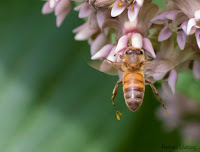 Family: Nymphalidae
Family: NymphalidaeDate: 7.22.15
Observation:
I wasn't planning on taking any pictures this day, but I changed my mind when this Red Admiral decided to hang around the asters in our backyard.
Facts:
Red Admiral butterflies prefer to feed on sap slows and fermenting fruit; nectaring on flowers is typically a secondary option. Caterpillar hosts are the nettle family.
Learn more at Butterflies and Moths of North America - Red Admiral














